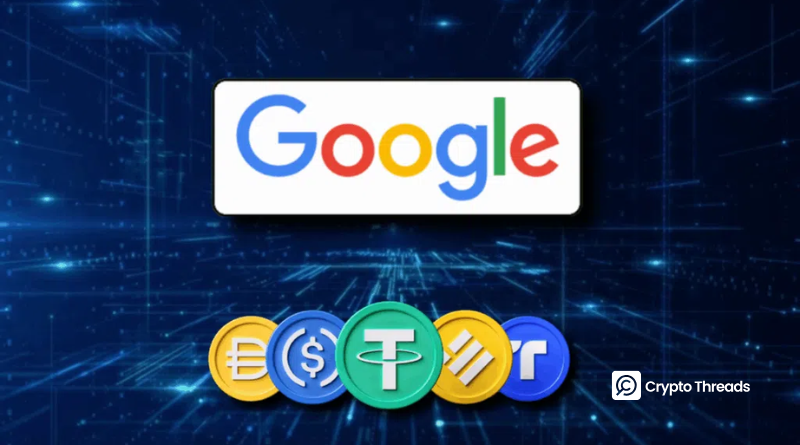Google Unveils AI Agent Payments Protocol with Stablecoin Support
Google has launched an open-source payment standard that allows AI agents to send and receive money using both traditional card networks and U.S. dollar–pegged stablecoins, signaling a major step toward machine-to-machine commerce.
- Developed with Coinbase and input from 60+ firms, including Salesforce and American Express.
- Builds on Google’s April Agent-to-Agent (A2A) spec by adding payments and consent verification.
- Supports autonomous transactions, verified auditing, and programmable settlement.
- Aligns with Google Cloud’s blockchain initiatives like the Universal Ledger for institutional settlements.
Google has introduced an open-source payment specification designed for AI agents to autonomously send and receive value using both conventional card networks and on-chain stablecoins. Built in collaboration with Coinbase and shaped by feedback from more than 60 companies, including Salesforce, American Express, and Etsy, the protocol extends Google’s existing Agent-to-Agent (A2A) framework, which standardizes communication between AI agents, to include payments. The new layer allows agents to verify user consent, apply guardrails, and settle transactions seamlessly across card rails and blockchain-based assets.
The initiative reflects Google’s broader effort to merge AI capabilities with financial-grade blockchain infrastructure. Earlier this year, Google Cloud piloted the Universal Ledger, a programmable settlement network for institutional transactions. By supporting both legacy payment systems and dollar-pegged stablecoins, the agent payments protocol aims to provide a bridge between traditional finance and decentralized assets, creating a foundation for fully automated commerce where AI-driven software can operate as autonomous shoppers, brokers, or corporate back-office bots.
James Tromans, Google Cloud’s Web3 lead, highlighted that the protocol was designed “from the ground up” to support stablecoins alongside existing financial rails. This dual approach ensures that software agents can authenticate intent and move value across multiple networks without human intervention, enabling verifiable and auditable machine-to-machine transactions at scale.
Google’s launch comes amid a growing wave of AI-focused blockchain initiatives. On the same day, the Ethereum Foundation announced the formation of its decentralized AI (dAI) team to position Ethereum as a base layer for the emerging AI economy. Together, these developments point to a future where artificial intelligence and decentralized finance converge, allowing software agents to interact and transact as economic participants.
Final Thought
By embedding stablecoin functionality into its AI agent payments protocol, Google is laying the groundwork for a new era of autonomous, cross-rail transactions. This open-source approach could accelerate the integration of AI and blockchain technologies, reshaping how value moves across both digital and traditional financial systems.



